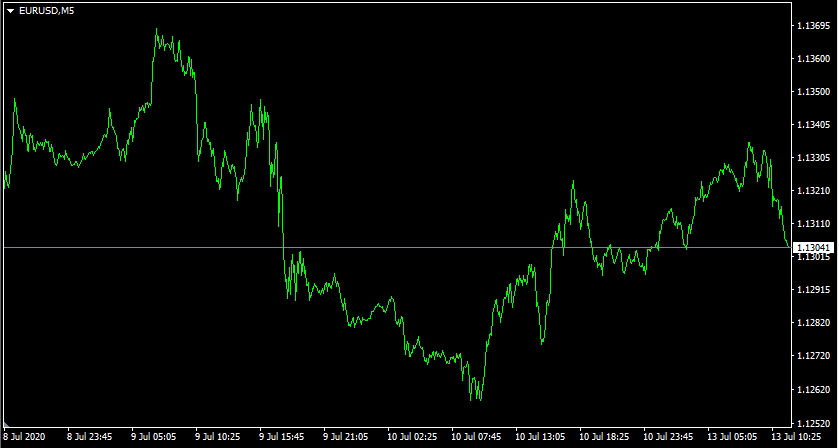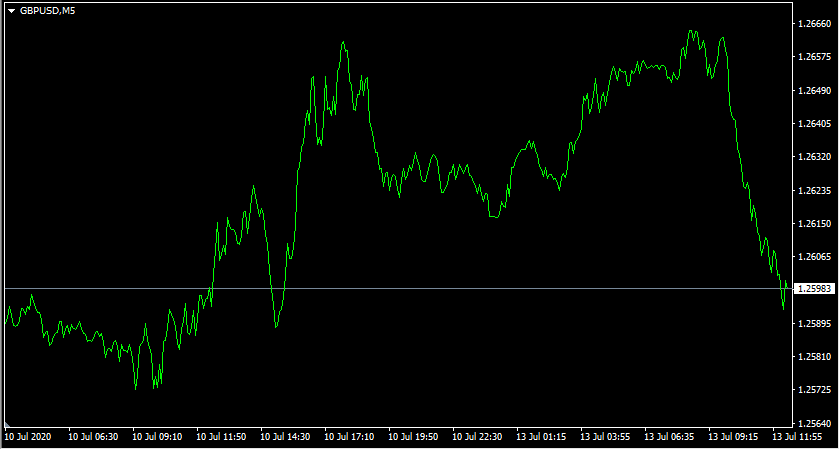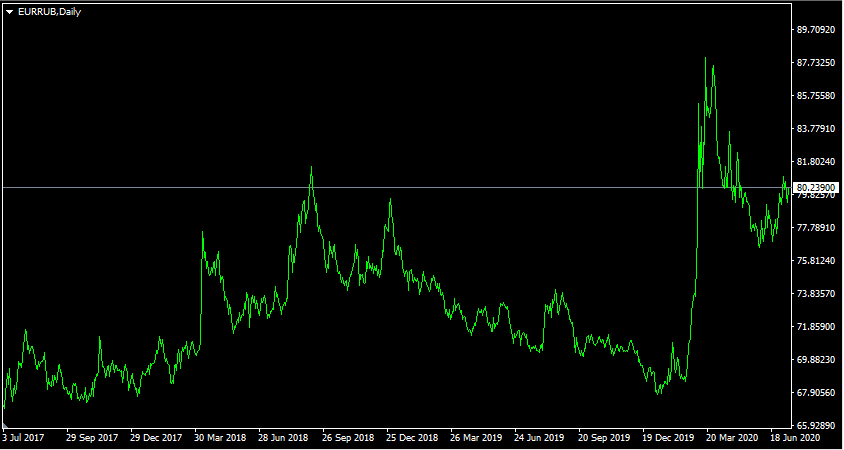Table of content
Nowadays it seems that nearly every experienced professional Forex trader and financial expert is talking about the importance of using stop-loss or trailing stop orders in Forex trading. Yet at the same time, some traders wonder whether it is even possible to trade successfully without using those types of orders.
Any honest and thorough analysis will reveal that in the majority of cases the use of stop-loss or trailing stop orders is essential to protect traders from high potential losses. Therefore, ignoring those types of orders can be a major mistake in most cases.
However, there are indeed some exceptions. Firstly, traders using the scalping trading style do not really need those orders. This is because the timeframe for those sorts of traders is between 1 to 15 minutes. Since traders can monitor price movements all the time during this period, there is no point in spending time on stop-loss orders. In fact, here employing those methods can be even disadvantageous to traders. In such short term trades, every second is important, so filling out those orders can cause market participants to miss some lucrative opportunities.
Another major exception to this might be carry trades. The main aim of this strategy is to borrow money from lower-yielding currencies in order to purchase higher-yielding currencies. As a result, traders are able to profit from the interest rate differentials and even receive interest from a brokerage company on a daily basis. Market participants keep those types of positions for months, therefore, the use of stop-loss or trailing stop orders might be disadvantageous for traders.
Benefits of Stop Loss Forex Trading Strategy
The stop-loss order involves an agreement, where the trader specifies an exchange rate at which the position will be closed by the broker without further instruction. This protects traders from suffering a significant amount of losses, due to a losing trade. To illustrate the essence of stop-loss orders, let us take a look at this 5-minute EUR/USD chart:

As we can see from the diagram above, the EUR/USD pair was trading near $1.1320 level. After reaching a peak at the $1.1370 level, the pair fell sharply, eventually falling all the way down to $1.1258 mark. This was followed by the recovery of the Euro, which regained some of its losses and returned to $1.1304 level.
Now let us suppose that traders analyzed the charts of this pair, have checked some fundamental economic indicators, and finally decided to open a long EUR/USD position at $1.1370 level, a recent high point of the pair. Let us further suppose that the invested amount for this trade was $10,000 and the level of leverage was at 50:1.
As we already know during this period, the exchange rate of the pair dropped from $1.1370 to $1.1258. This means that the Euro fell by approximately 1.01% during this period. This means that without the use of stop-loss orders traders would have lost $5,050, leaving them with $4,950 remaining from the original $10,000 investment. It goes without saying that this is a significant loss and trades would have a hard time recovering from this loss.
Now let us consider what will happen if traders used a stop-loss order at $1.1360 level when opening a long position at $1.1370. In this case, the position will be liquidated, as soon as the pair reaches the $1.1360 mark, which represents only around 0.09% decline. Consequently, traders will only lose $9 and retain the rest of $9,991 on their accounts intact.
So as we can see from the above example, the use of stop-loss orders can make a significant difference in trading. This is exactly why so many experienced Forex traders and financial experts recommend us to take advantage of stop-loss orders. The fact that it limits potential losses significantly, means that traders are well-positioned to make up from those losses from other winning traders. Returning to our example, it goes without saying that recovering the lost $9 is much easier than offsetting $5,050 loss.
Use of Trailing Stop Orders, Instead of Using Forex Stop-Losses
There many experienced traders who prefer to use trailing stop orders, instead of more traditional stop-loss orders. They have some similarities, but also some key differences. The fact of the matter is that the trailing stop order does not remain at a fixed level. If the price increases, then it rises as well. This protects traders from suffering heavy losses and at the same time helps them to maximize their potential profits.
In order to better illustrate the advantages of trailing stop orders, let us take a look at this 5-minute GBP/USD chart:

As we can see from the above diagram, the pound trader at $1.2590 level at the beginning of this period. After some hours of steady appreciation, the British currency has reached the $1.2660 level. However, those gains were eventually proven to be short-lived, as the pair soon dropped back to $1.2598, giving up nearly all of its recent gains in the process.
Now let us suppose that traders decided to use trailing stop order with this trade. They opened a long GBP/USD position at $1.2590 with $10,000, leverage at 50:1, and setting a trailing stop order at $1.2580. As the exchange rate rose to $1.2660, the threshold for the order would also have risen to $1.2650. So as the pound began its decline, the trailing stop order would have been triggered and the position closed at $1.2650, locking in the 0.48% rise in the currency. So in this case traders would have ended up with approximately $2,400 profit, quite a decent payout for a single trade.
As we can see from this example, the use of trailing loss orders might be advantageous for traders compared to stop-loss orders. The reason for this is that the former one also fulfills the same function as the latter, but at the same time, helps traders to lock-in some profits in the process.
Disadvantages of Using Stop Loss Orders
Despite all of the benefits of using stop-loss orders, for the sake of accuracy, it is important to mention that they do have some disadvantages as well. Firstly, the fact that traders get to specify the level at which their positions should be closed does not guarantee that this will always be the case.
The truth here is that in times of high volatility, the brokerage company might not be able to close the position at the specified price. Instead, a broker might close the position below the level, mentioned in the stop-loss order.
Another disadvantage of stop-loss orders is the fact that if the chosen level is too close to the current market price, then even as a result of small adverse movement in the market the position might close prematurely and when if the market reverses the direction, then the trader will not be able to capitalize on those moves. On the other hand, without the order in place, a trader can analyze the situation and make necessary decisions accordingly.
Finally, it is worth noting that after such major announcements as central bank interest rate decisions, consumer price index (CPI), gross domestic product, or non-farm payroll announcement, the market very often makes very sharp moves on both sides for several minutes, before it settles down. Therefore in these types of scenarios, one can easily imagine the situation, when the market initially makes a sharp move downward, triggering a stop-loss order and then charge the direction and go much higher. So in those types of scenarios, the trader will not only have to accept losses for no good reason but also will have to let go of a potentially very profitable opportunity.
Here we also should not forget the fact that, in highly volatile environments, traders might lose even more than specified in the stop-loss order. Therefore, the periods prior to and during the major economic announcements might not be the best time for using those types of orders. The trader might consider managing those traders manually or avoid trading during those times altogether.
Forex Trading Without Stop-Loss Orders
Considering all of the advantages we have discussed before, it would seem to many people that trading without stop-loss orders is a serious mistake. However, at this stage, it is worth mentioning that there can indeed be some exceptions.
The first obvious scenario where one can trade Forex profitably without a stop-loss order is scalping. In this trading style, the timeframe for each trade ranges from 1 to 15 minutes. This obviously allows traders to execute a considerable amount of trades per day. In fact, some professional Forex traders who are experienced in this trading style can conduct even 50 trades per day.
The short timeframe of such trades does mean that in the majority of cases, the market does not have enough time to make some large moves. Therefore, traders usually aim for 5 to 20 pip profits with scalping trades. Obviously, in times of central bank interest rate announcements or other important events, the volatility in the market can rise considerably and the pair might even move by as much as 100 pips or more, however, those instances are rather rare.

In order to improve the odds of success in their favor, traders also adjust the risk-reward ratio to 2:1 or 3:1 in their favor. This means that for risking 5 pips, traders aim to take profit at 10 or 15 pips. Finally, another advantage this trading style has is the fact that traders do not have to account for rollover charges since they close all of their positions before the end of the trading day.
Now because it comes down to such small profits, every second at the market is valuable. Depending on the experience of a trader, he or she might need 2 to 5 seconds to fill out and submit a stop-loss order. Depending on the market conditions, during his period, the currency pair might move by up to 5 pips, or just remain flat.
When it comes to the long term trading, just a 5 pip change in the market makes very little difference to traders. After all, those types of trades usually aim at large profits, worth hundreds of pips.
On the other hand, 5 pip change can make a major difference with scalping trades. Therefore, wasting those precious seconds filling out stop-loss or trailing stop orders, might be counterproductive for many traders. The main point of those orders is to protect traders’ accounts from suffering heavy losses when they are not in front of the screen.
The fact that scalping involves up to 15-minute trades and the majority of traders do not use stop-loss orders here does not necessarily mean that traders should sit back and let their losing positions worsen during this timeframe. If the market moves against them, many experienced scalpers close their positions after losing up to 5 pips. This protects them from suffering heavy losses and achieves the same purpose as trading with a stop- loss.
However, due to such a short time frame of those types of trades, it is no longer an issue. Obviously, traders can spend 15 minutes in front of the trading platform and monitor all market movements themselves, instead of relying on those types of orders. So in this particular trading style, it can be much more convenient for traders to take profit or close losing trade manually. Therefore, the majority of scalpers do not really use stop-loss trading Forex.
Using No Stop-Loss Forex Trading Strategy with Carry Trades
Scalping trading is not the only style, where traders might consider not using a stop-loss order in Forex trading. One example of this would be carry trades. This Forex strategy involves borrowing in a low-yielding currency in order to buy higher-yielding currency. The trader benefits from this interest rate differential and receives the daily interest payments from the brokerage company.
There might be several disadvantages of using stop-loss order in this scenario. Firstly, carry trading is itself one of the long term Forex strategies. If traders just leave a stop-loss order just a few pips below the current market rate, then some decline in the pair might trigger the order, the position will be closed and market participants will not receive any more interest payments.
The fact of the matter is that when it comes to carrying trades, the time usually works in the trader’s favor. Even if the exchange rate of a given currency pair stays mostly flat for several months, then still traders will end up with some profits, due to the daily interest payments they receive from brokers.
Even if the market goes against the trader, in some cases those regular rollover payments might offset those losses and a market participant might still be able to end up with profits. To illustrate this example we can take a look at this daily EUR/RUB chart:

As the above diagram demonstrates, 3 years ago the pair was trading near 66.80 level. After months of steady gains the Euro has risen considerably and by September 2018 has reached 81.50 level. Despite this strong uptrend the gains of the single currency turned out to be quite short-lived. During the subsequent months, the Russian ruble appreciated considerably. As a result of this development, by the middle of January 2020, the EUR/RUB pair has already fallen all the way down to 67.80.
However, the panic selling caused by the outbreak of the COVID-19 pandemic led to the selloff of many emerging market currencies. As a result of this process, the Euro has made some rapid gains against the ruble and has risen all the way up to 90 level. Yet, those extreme levels did not persist for long and the ruble started to recover. By the middle of July 2020, the pair now trades close to the 80.20 level.
So as we can see from this analysis, after some major fluctuations from both sides, the pair has essentially returned back to September 2018 levels. Therefore, let us suppose that some carry trader, after conducting some fundamental and technical analysis, has decided to open a short EUR/RUB position with $20,000 with 1:5 leverage. Let us further suppose that they have used no stop-loss Forex strategy.
Despite occasional high levels of fluctuation and some cases of ruble depreciation, if traders have kept this position open, they would not have suffered any capital losses. On the other hand, they would have earned a considerable amount of interest.

During this entire period, the European Central Bank has kept its key interest rates at 0%. At the same time, the Bank of Russia’s rates has fluctuated within 4.5% to 7.5% range. For the sake of simplicity let us take the midpoint of this range, which is 6%, and use it for the purposes of calculations. This means that on average, the interest rate differential between the Euro and Russian ruble was at 6% in favor of the latter.
One important point to keep in mind when it comes to carry trade is that brokers usually do not pass on 100% of the net interest earnings to their clients. Instead, they do keep a small percentage of it as a fee. The exact amount is heavily dependent upon the competitiveness of the broker. So in our example, let us suppose that the brokerage company keeps a 0.1% interest as a fee, which is very typical. Therefore, the daily rollover, received by our traders would be the equivalent of the annual interest rate of 5.9%.
From September 2018 until July 2020 there are 22 months. So the total interest earned would be the equivalent of approximately $10,817, or $491.67 per month. Due to using 5:1 leverage the traders achieved by only investing $20,000, instead of $100,000. This means that the effective annual return here is 29.5%, which is quite impressive.
So in this case Forex, no stop-loss strategy might be justified, because most carry traders might not want their daily income to be cut short by the sudden triggering of a stop-loss order.
Forex No Stop-Loss Strategies
- Stop-loss Strategies in Forex Trading include not only the use of stop-loss orders themselves but also the utilization of trailing stop orders. Many professional experienced traders emphasize the importance of using those tools. The reason for using stop-loss methods in Forex Trading is that it allows market participants to put a predefined limit on their potential losses. With trailing stop orders, traders can also lock-in potential profits, even in times when they are unable to be in front of the screen.
- The majority of carry traders are trading Forex with no stop-loss. This trading style usually involves trades that last from 1 to 15 minutes. Here traders can easily monitor all of the market movements during this period. Therefore trading without stop losses here becomes a viable option. It is also important to mention that with such short timeframes, every second is very important. Therefore, it makes very little sense for some traders to spend 2 to 5 seconds on filling out stop-loss order forms, the time during which they might miss some profitable opportunities.
- Some Forex no stop-loss guides might mention the fact that some carry traders do not use those types of orders. This strategy involves borrowing in a low-yielding currency and buying the higher-yielding currency. The trader then capitalizes on those interest rate differentials and receives daily interest payments from the brokerage company, as long as the position remains open. Therefore those types of traders typically have a long term timeframe. Consequently, some traders do not want their positions to be closed automatically and as a result, lose their daily income in the process.



